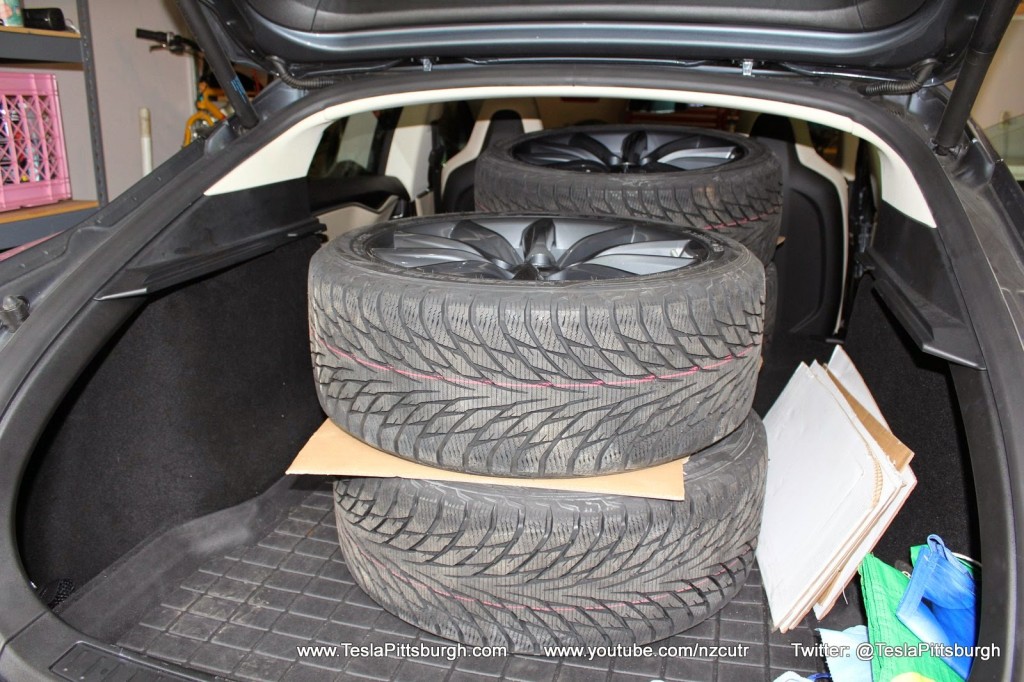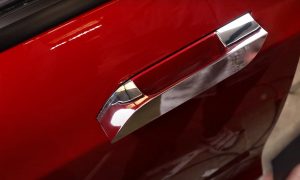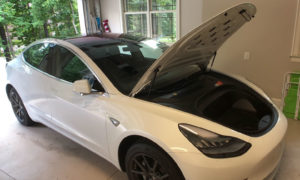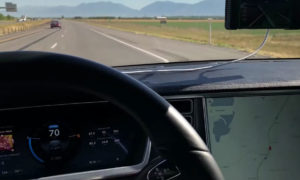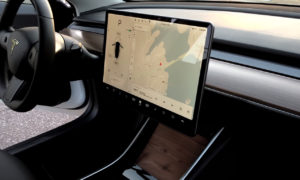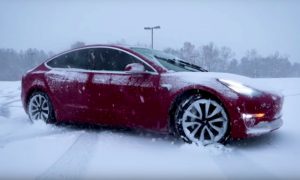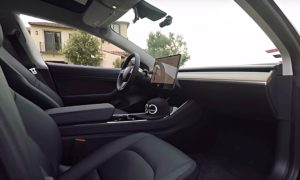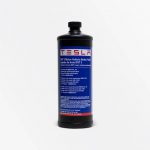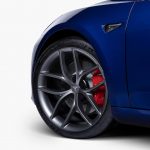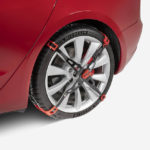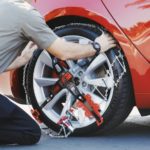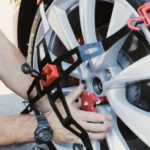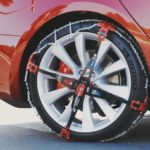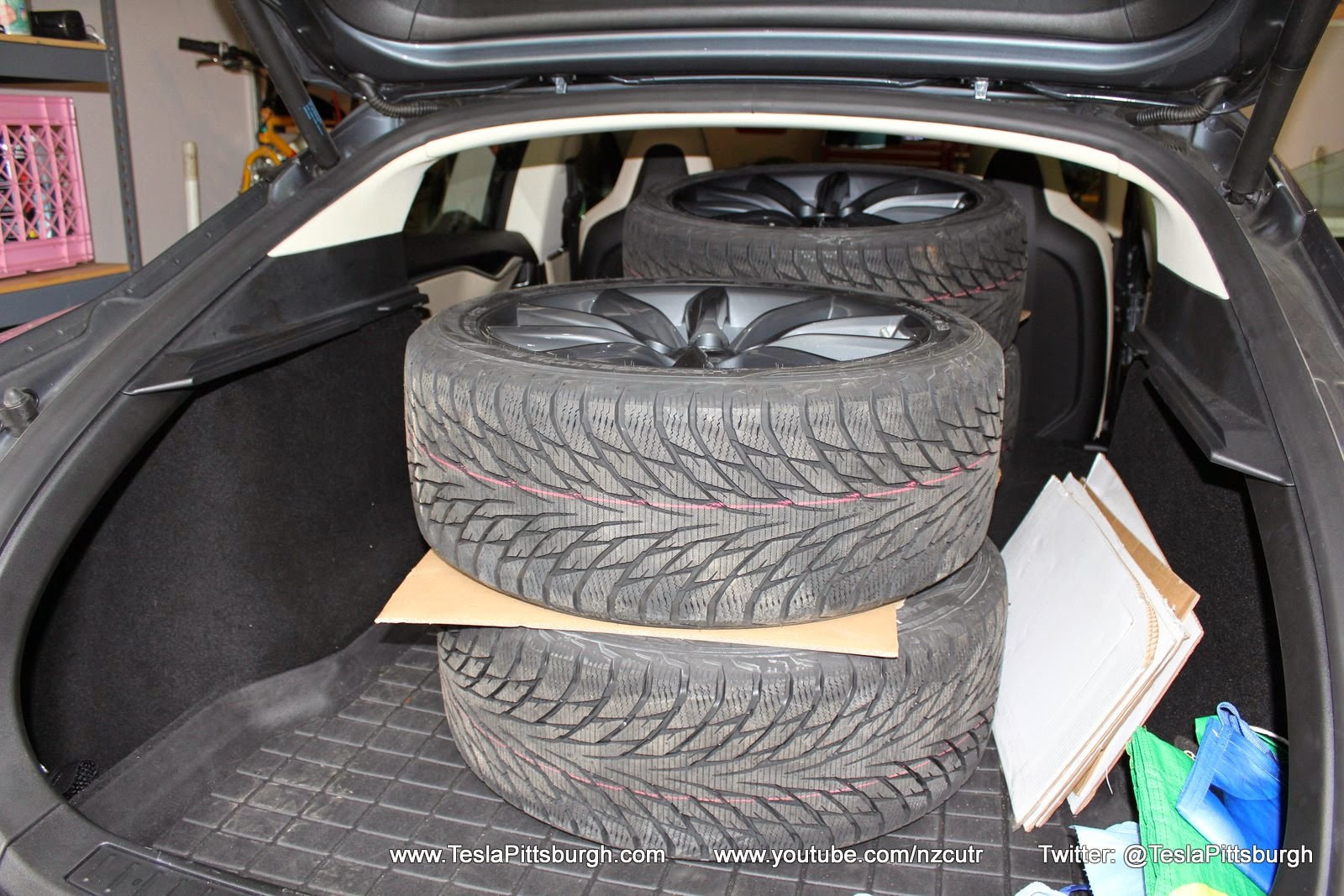

Aftermarket Wheels
Tesla Winter Wheel Swap and TPMS Reset
As a midnight road warrior for years now, thanks to my “day job” in TV news, I’m constantly battling home on the lonely, dark, unplowed streets and highways of Pittsburgh in my trusty Subarus. Arriving home safely, with many an appreciative grin at my faithful AWD vehicle du jour, I’d convinced myself that I’d never buy a car without AWD.
When I was in high school in Stuttgart, Germany, I was a very active skier. Being out in the snow was a natural place and I spent many hours on ski slopes and traversing countries to get to/from ski slopes. More often than not I was on a bus (definitely the way to travel when exhausted from a week of skiing) but sometimes not. As every skier knows, packing for a trip is more than just shoving extra turtlenecks and socks into a bag, it’s about preparing your equipment and getting repairs done before discovering at the top of the ski lift that your binding won’t catch.
Back in those days I often found myself behind a ’70s era BMW 7-series, a car so malevolent in snow that its attempts at homicide were only tempered by the application of snow tires. The steering wheel was a completely optional accessory in Winter driving as most directional changes could be made with the gas pedal alone. Little did I know it, but a lesson was learned, combining those two activities… and here we are.
Actually, the last time I drove a rear wheel drive car in the snow was returning to upstate NY from Pittsburgh in the Blizzard of ’93. I’ll be the first to admit that making a long car trip in the midst of the “Storm of the Century” wasn’t a brilliant move– but in our defense, we didn’t realize it was so massive at the time. Our chosen snow steed was a huge Mercury Grand Marquis with “reasonable” tires that had to be flogged to attain highway speeds in the best of conditions. In a blinding snowstorm cresting the mountains on I-80 it became so encrusted with snow on it’s blunt nose that it bobbed under the weight and the headlights vanished. Getting out to clear the lights in the midst of a “thundersnow storm” was not a high point of our trip. We made it all 300+ miles without incident… until doing an elegant 540 degree spin while making our last turn. I say “elegant” because it was a slow motion affair in deep snow that took us past the turn before then pointing us back at it. Unfortunately, my girlfriend (now wife) could already see through me and knew it wasn’t a planned maneuver. She remains hard to impress, even to this day.
With the Tesla there was never any question about whether or not we would get snow tires, and in my earlier blog post, I inventoried the assembled gear (with help from Rob M.). While the Tesla might be as strong as a tank: could it be a snow tank? I’d made all the proper purchases. I had all the equipment. Now it was time to test it before the snow flew. The perfect opportunity presented itself when Serena rolled into her first tire rotation window. Why not, while rotating tires anyway, shuffle on the Winter set for a trial run and TPMS check? Plus… admittedly… I was VERY curious what the TST wheels would look like and Tesla’s rotation interval provided me with a reasonable excuse!
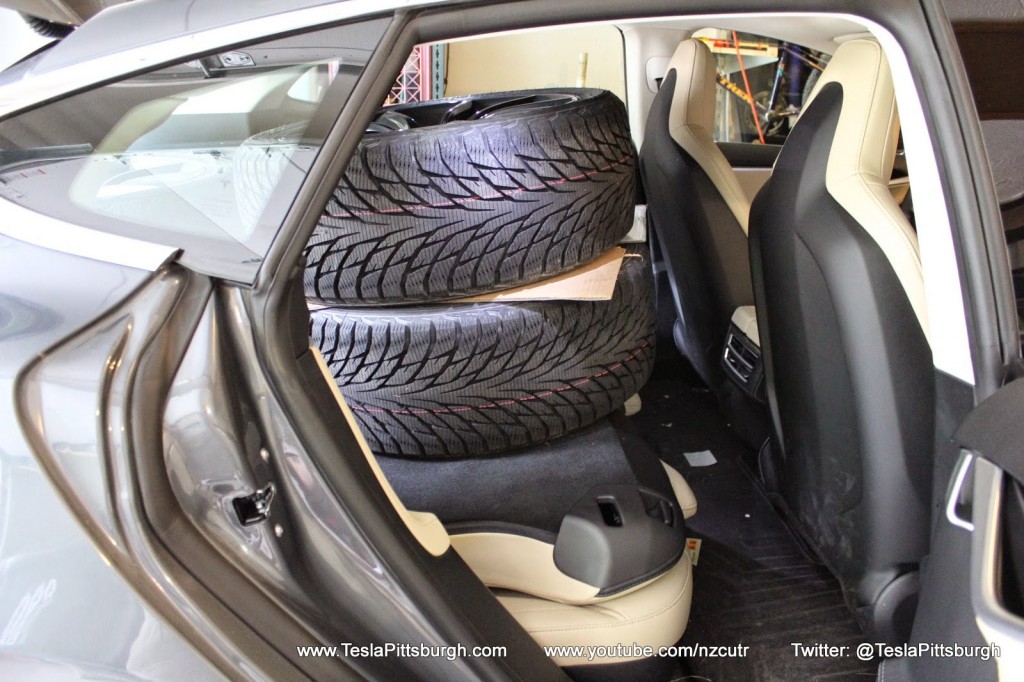
Loading up the freshly mounted tires for the trip to my friend Jake’s house (owner of the OUTAGAS Tesla), I paused to take a few pictures so you can see how easily a full set of mounted tires will fit in the cargo space of the Model S. It really is a very utilitarian car– they’re not even crowded in there!
Tesla Winter Wheel Swap Procedure
The jack we used to raise our Tesla Model S is rated for more than than the total weight of the car. Remember, unlike gas cars, the Tesla weighs the same all the time. So you can use the excuse of driving it around to lighten the load if it keeps your significant other from getting jealous but– as a practical matter– the car weighs the same whether car is full or empty. Uh-hem. You didn’t hear that from me.
You’ll notice a hockey puck on the top of the jack. Unlike my vintage floor jack, the modern jacks have padded cups, but these cups only snag the edge of the Tesla’s jack point. If you try and center the cup on the jack point you’ll end up impinging on the battery pack, so the hockey puck allows you to center the cup without contacting the pack.

Placed against the front jack point (you can see the rectangular outline of it on the sill), the hockey puck allows for the jack’s cup to center on it without touching the edge of the main pack. Once you have some positive pressure, loosen the lug nuts (if you haven’t already done so) before lifting the weight of the car fully onto the jack. Obviously, you’ll want to follow all the usual best/safe practices for removing and reattaching a wheel.
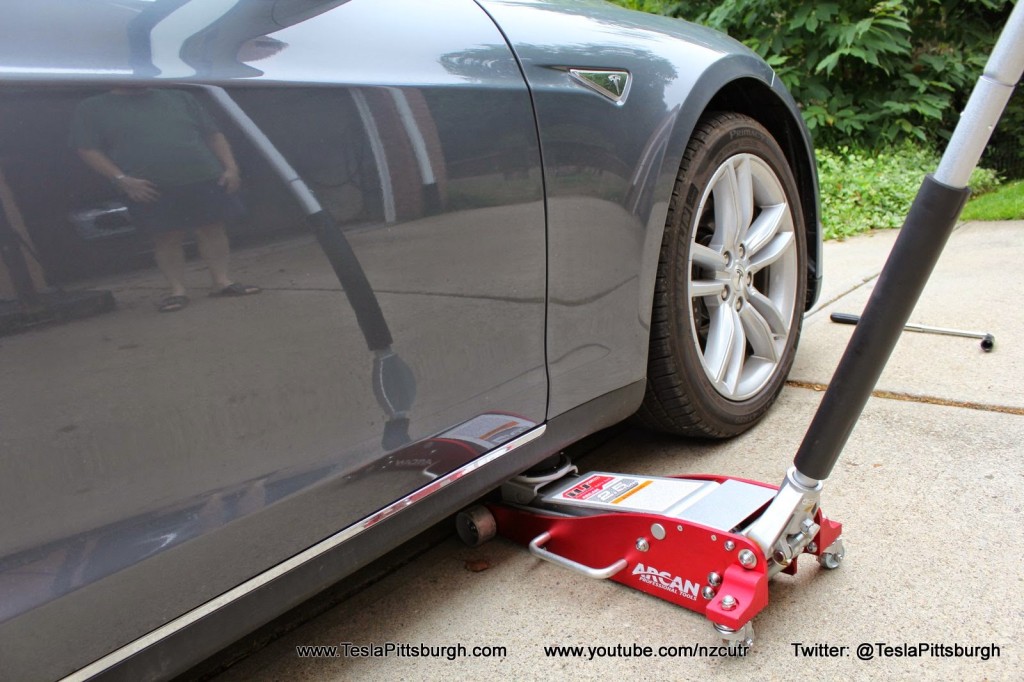
If you’ve worked on a lot of cars you might be amused by this picture. I was pretty surprised how far BACK the front jack point is. On my Chrysler 300 (a similarly sized car) the front jack point is directly behind the front wheel because of the weight of the engine/transaxle. On the Model S, the nose is actually quite light but the battery pack is not… so the jack point is unusually far behind the front wheel. I once jacked up my old Plymouth Neon at a similar distance back (due to ground conditions) and the structure sagged enough under the engine weight that the front door wouldn’t close until I lowered the car.
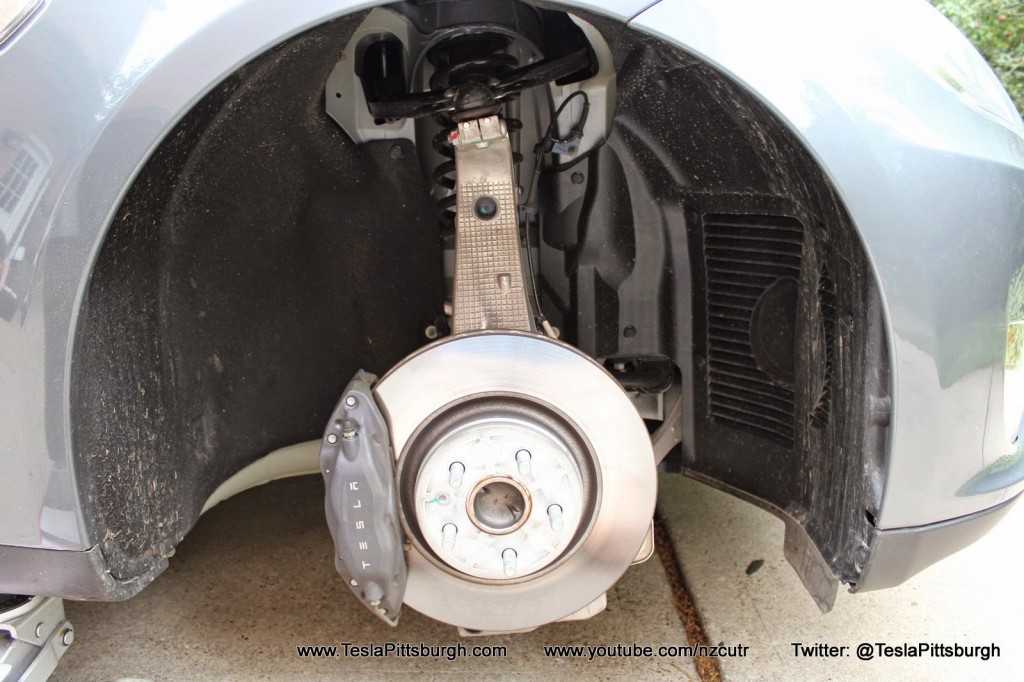
With the first wheel off, it was time to admire some of the Tesla’s engineering. Everything is pretty much made of cast or extruded aluminum and carefully shaped. Note the little flap on the leading edge of the wheel liner (right side of the picture) that helps deflect some of the turbulent air around the front edge of the tire.
After reading so many people comment on premature tire wear (mainly attributable to the air-suspension cars because of the camber change when lowered), I was really curious to get a good look at what had been going on under there. My car has the coil suspension but I’ve certainly enjoying the thrust of the Tesla since day one… so… drumroll…. Yep. Wear. Even, but definitely more wear on the rear tires. The rears were a good 3/32nd lighter in the tread department but– hey, that’s why we rotate them around, right?
That picture was a little confusing actually, so let’s swap those tires around and give you a closer look with the help of the gauge:
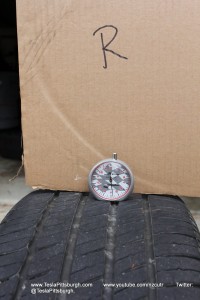
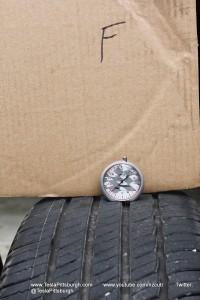
We continued working our way around the car until Serena was wearing her matching shoes and ready for the big school dance. Watch the video– all you air vs coil junkies– to see the ride height difference between Serena and Tess with matching wheels in place.
One of the newly mounted Nokians was flat… so Jake got all blow-hardy. We filled it back up and marked it with tape and, sure enough, a week or so after these pictures were taken it was flat again. I returned it to the tire shop and it was determined to be a faulty rubber seal on the TPMS sensor from TireRack. TireRack is currently sending me a replacement sensor and hopefully that will fix the problem. As I pointed out at the beginning, this is why we check our equipment before we need it.
With the TST wheels and tires mounted, the change in personality is dramatic. The grey on grey definitely gives a bit of pop the to color and a “little something special” is added.
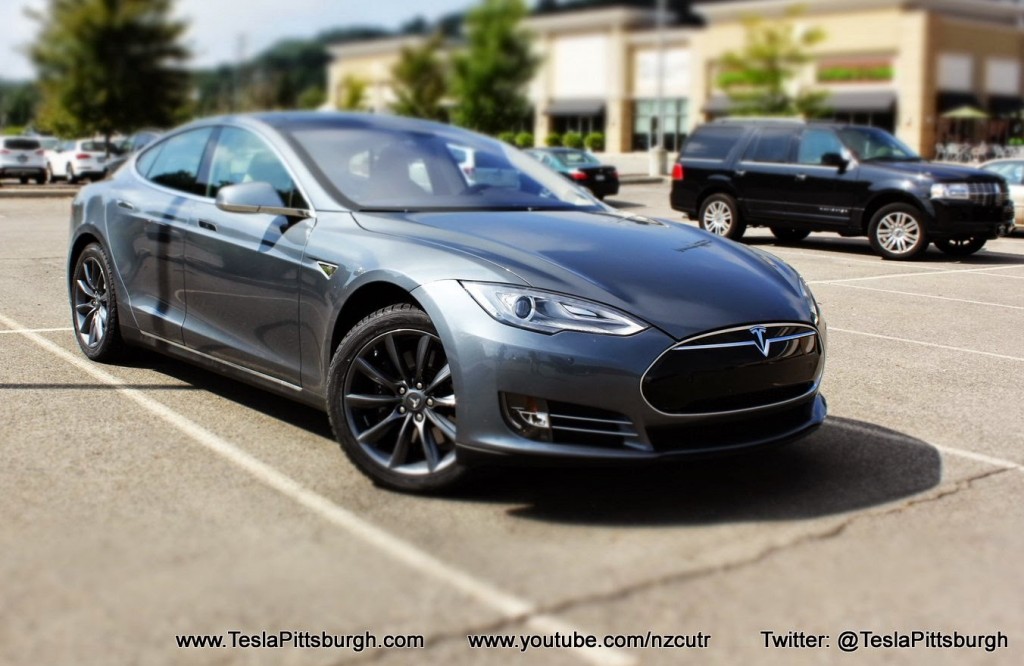
I’m still undecided about covering the lug nuts. Tesla has dark covers that they use with their grey wheels but most of the time the lug nuts are just reflecting the wheel color and disappear anyway. They’re actually a lot less noticeable in person than they are in pictures.
The aggressive tread of the Nokians could be felt on our dry ride over for coffee. The tires are very grippy and definitely a little softer than the Michelins, but I didn’t notice a substantial change in road noise.
With a few parting, lingering looks at the new wheels, we started prepping to reverse the whole process and put Serena back to “factory specs”.
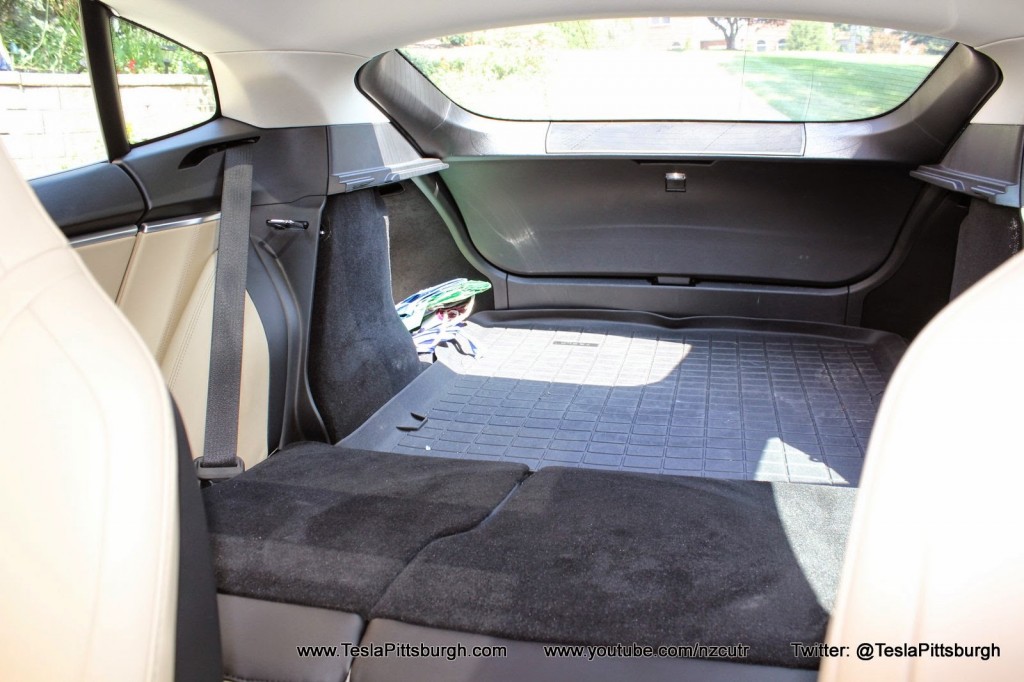
One last look before loading the tires back into the car– look how BIG that space is! Never let anyone tell you that a Tesla can’t carry as much as an SUV. Without even counting the frunk, that is a huge cargo area. Suddenly I feel like building an amusement park or installing a suitcase carousel and volunteering to be baggage claim at the airport.
Tesla Winter Wheel Swap Video
The video version of this post awaits your eager eyes. Don’t worry, I’m not as angry as I look in that clip frame:
I’ll detail some of the jacking procedures, show you the different in ride height from a coil suspension to an air suspension and wrap things up with a demonstration of the TPMS reset procedures. Enjoy!
Thanks for visiting us here!
CLICK to read more at www.TeslaPittsburgh.com, check out the videos on our YouTube channel at www.YouTube.com/NZCUTR and follow us on Twitter: https://twitter.com/TeslaPittsburgh.
Aftermarket Wheels
Pirelli unveils its first-ever replacement tire for EVs: the All Season Plus with Elect marking
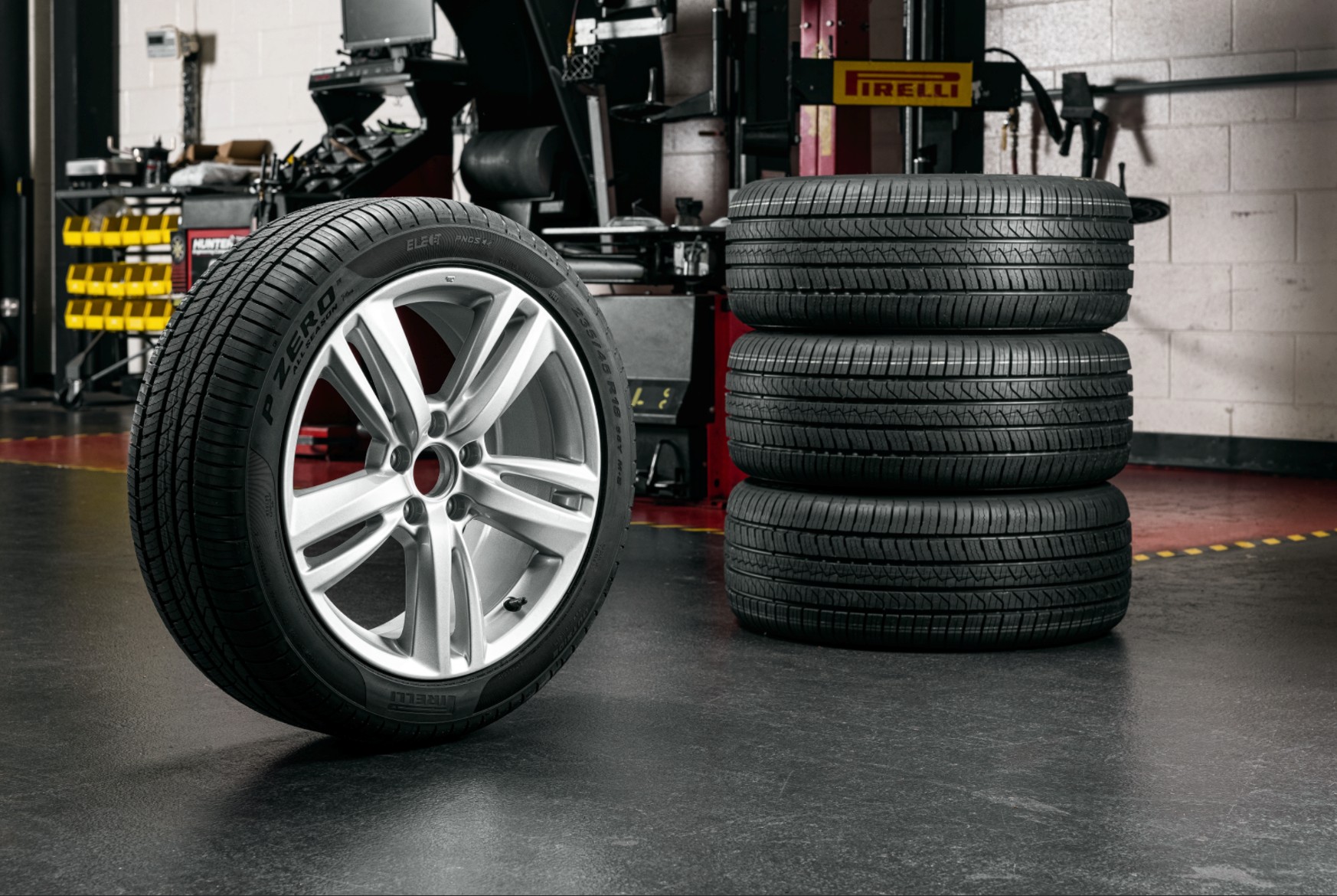
Pirelli, the Italian tire maker, announced today the introduction in North America of its first-ever replacement tire for electric vehicles: the P Zero All Season Plus with Elect Marking.
The Elect marking on Pirelli’s tires indicates several distinct advantages. First, the tire has low rolling resistance, which increases driving range and reduces energy consumption, making stops at electric vehicle chargers less frequent. When coupled with a high-range vehicle, like the Lucid Air Dream Edition or Tesla Model S All-Wheel Drive, the Pirelli Elect series decreases road contact, making the vehicles more efficient. When non-Elect P Zero All Season Plus tires have been fitted on vehicles, the Pirelli product has shown a reduction of rolling resistance by 15 percent, translating to direct improvement of the EV battery life cycle.
One of the most important and distinct advantages is also the reduction of road noise, creating a more peaceful a quiet experience in the EV’s cabin. In electric vehicles, road noise is more noticeable as the lack of a loud combustion engine, which drowns out these noises in a gas-powered car, provides more noise within the cabin. This was a main focus of Tesla for several years, as many consumers had stated road noise had gone to nearly intolerable levels. Tesla eventually worked with tire manufacturers for insulated rubber and made changes with its build processes to alleviate some of the cabin noise complaints.
Road noise won’t be a concern for those who utilize the Pirelli All Season Plus, as it features the company’s PNCS, or “Pirelli Noise Cancelling System.” Pirelli developed this technology to reduce interior noise thanks to a sound-absorbing material applied to the inside of the circumferential wall. It offers improved driving comfort, which is another feature appreciated by EV drivers. Tires equipped with PNCS have shown a 5 percent reduction in cabin noise versus the leading OEM competitor.
Pirelli’s new All Season Plus replacement tire, especially for EVs! (Credit: Pirelli)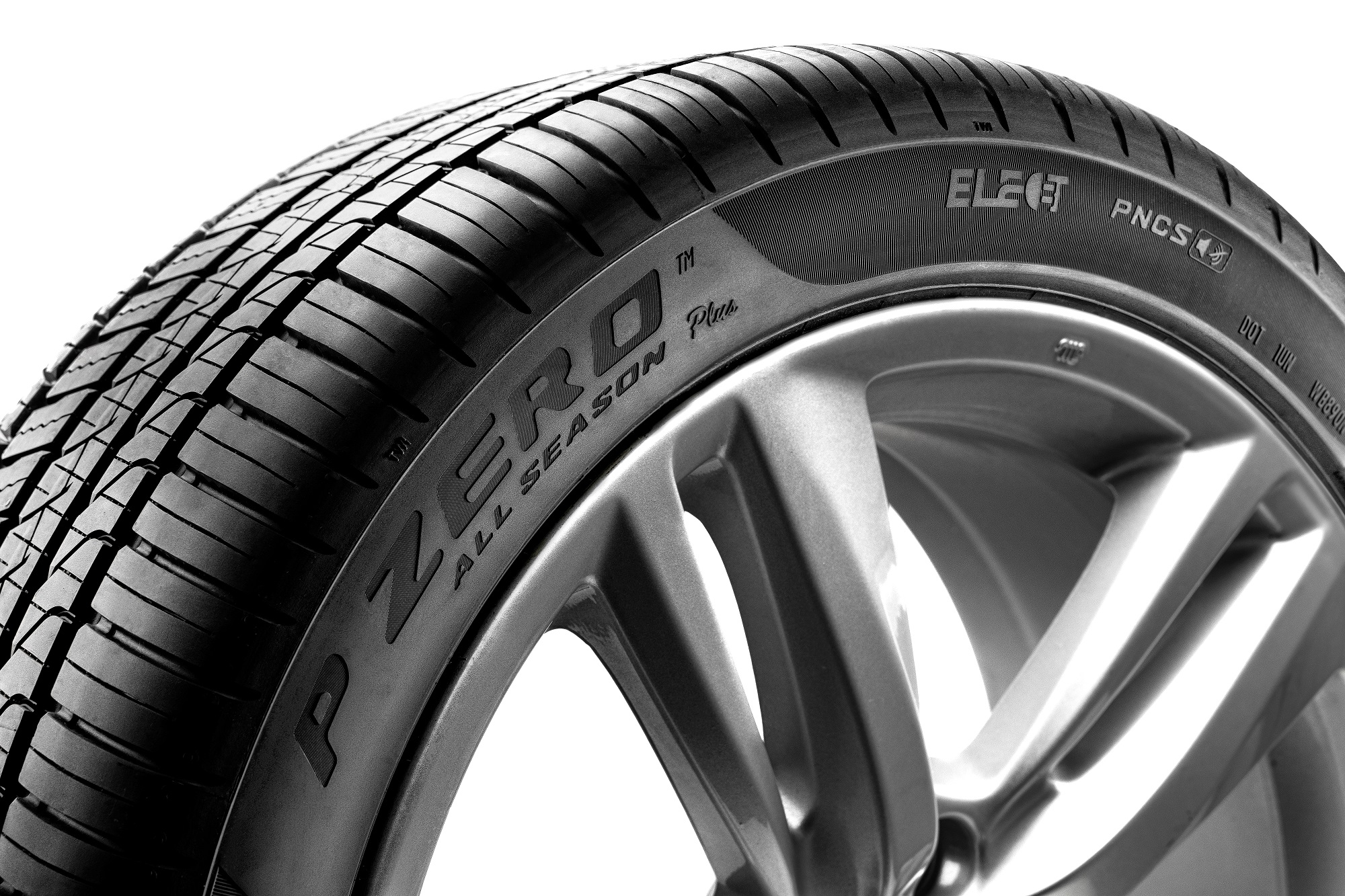
Another incredible advantage of Pirelli’s Elect tires is the immediate grip it provides for EVs, helping support the notoriously fast acceleration of electric powertrains. Along with the traction control and launch grip advantages, Pirelli’s tires support the weight of a battery-powered vehicle, the company said.
Pirelli continues to develop new tires and technology for EVs, especially as the automotive industry continues to show a massive transition to more sustainable powertrains. Pirelli was the first tire manufacturer to homologate a dedicated technology for EVs. It also has the highest number of homologations of tires for electric vehicles.
“Developing a tire specifically for electric vehicles requires a number of considerations you do not encounter when working with internal combustion engines,” Ian Coke, Chief Technical Officer at Pirelli North America, said. “Electric vehicles are heavier, have more powerful and faster acceleration off the line, and require lower rolling resistance.”
Pirelli developed a new compound formulation that increases abrasion resistance of the tire, which compensates for the high torque and increased weight, which EVs both have. The tire is built to offer “long-lasting performance in every condition,” the company said.
The new P Zero All Season Plus Elect will fit some of the most popular EV high-performance models and will be available from 18 to 20 inches. In addition to the clear EV vehicle benefits, the new P Zero All Season Plus Elect comes with a 50,000-mile limited treadwear warranty.
I’d love to hear from you! If you have any comments, concerns, or questions, please email me at joey@teslarati.com. You can also reach me on Twitter @KlenderJoey, or if you have news tips, you can email us at tips@teslarati.com.
Aftermarket Wheels
Tesla launches Model 3 Track Package with ‘Zero-G’ wheels and race-focused brake mods
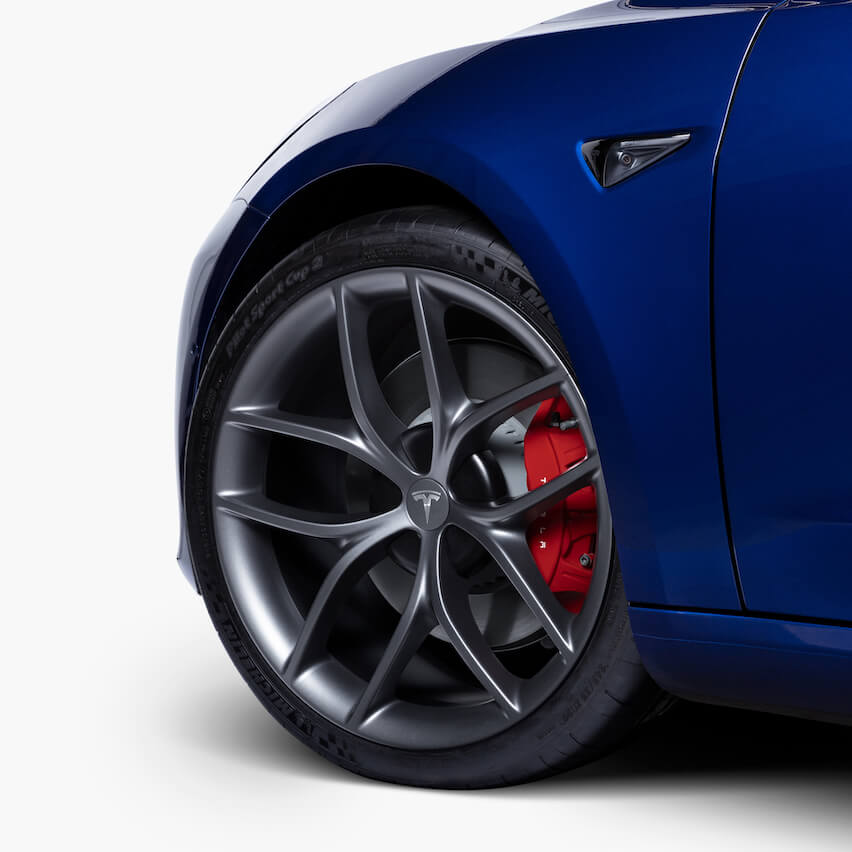
Tesla has launched a new Model 3 Track Package for racing enthusiasts looking to maximize track performance of their all-electric sedan with Zero-G Performance wheels and race-focused brake and tire modifications.
The new performance package is being offered for the Tesla Model 3 Performance variant at $5,500 and includes stickier Michelin Pilot Sport Cup 2 tires that are popular among track junkies, high-performance brake pads and racing brake fluid.
“Optimize the track performance of your Performance Upgrade Model 3. Track Package is a complete hardware package designed to give you maximum cornering force, braking performance and high-speed stability for the best lap times,” reads the description on Tesla’s online Shop for the upgrade.
Tesla Model 3 Track Package Includes:
- 4 x 20″ X 9″ Zero-G Performance wheels
- 4 x Tesla logo center caps
- 20 x Lug nut covers
- 4 x 245/35ZR20 XL Michelin Pilot Sport Cup 2 tires
- 4 x tire pressure sensors
- 1 x front and rear high-performance brake pads
- 1 x track-focused brake fluid
Included in the Model 3 track package are a set of 20-inch diameter “Zero-G Performance Wheels” in a “square set up”, whereby all four wheels and tires are of equal size. The upgraded Zero-G wheels in a 20″ x 9″ set up are 0.5 inches wider than the factory 20″ x 8.5″ Model 3 Sport Wheels. Combined with wider and stickier rubber from the Michelin Pilot Sport Cup 2 tires, drivers are able to negotiate more aggressive cornering speeds in their Model 3 Performance as well as higher entry speeds.
While Tesla’s single-pedal driving capability through regenerative braking means that a driver rarely needs to use the brakes, the demands of track driving at high speeds into turns on a race circuit require the heavy use of brakes, often leading to brake fade due to higher brake temperatures.
Tesla’s Model 3 Track Package includes high-performance front and rear brake pads that are designed to withstand more aggressive braking and higher temperatures, paired with Tesla-branded, track-focused brake fluid.
Model 3 Performance owners looking to purchase the $5,500 track package can coordinate shipping and installation with their local Tesla Service Center.
Shipments for the Model 3 Performance Track Pack is expected to begin in April 2020.
H/T @model3owners
Aftermarket Wheels
Tesla adds Model 3 snow chains for 20″ Performance wheels to online store
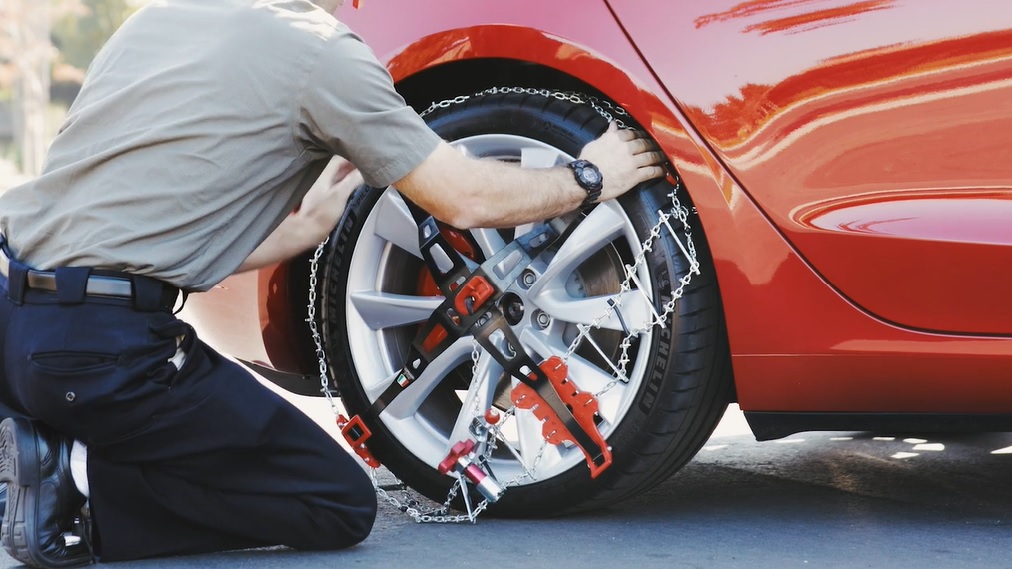
Tesla Model 3 snow chains for 20″ Performance wheels have been added to the company’s online store.
The Maggi Trak Sport 214 snow chain is a unique type of self-adjusting and easy-to-install chain that utilizes four clamps and one fixing point for installation. Rather than wrapping the chains around the inner portion of the tire, the outer wheel side of the drive wheels is used as the single fixing point over complex inner side attachments. Excellent traction and durability in snowy conditions are to be expected from the aftermarket addition. Previously, snow chains were only available for Model 3 with 19″ wheels in a dual motor and rear-wheel drive configuration and were produced by a different manufacturer.
Tesla’s store also notes that the Maggi Trak Sport chains are only approved for Model 3 Performance 20” wheels and Tesla-approved 235/35R20 tires. Additionally, they should only be installed on the rear wheels. For $290, the snow chain package includes a nylon protective bag, one pair of chains, and an installation guide, and delivery is anticipated to take 2-3 weeks.
- Tesla now offers snow chains for Model 3 AWD tires. | Credit: Tesla Motors
- Tesla now offers snow chains for Model 3 AWD tires. | Credit: Tesla Motors
- Tesla now offers snow chains for Model 3 AWD tires. | Credit: Tesla Motors
- Tesla now offers snow chains for Model 3 AWD tires. | Credit: Tesla Motors
According to the manufacturer, the self-adjusting nature of the Maggi Trek snow chains ensures a perfect grip between the chain and the tire tread. The gripping unit design has a smaller profile that won’t compromise the minimal space between the outer tire and inner wheel well, resulting in a safe and quiet drive. The Maggi Trak Sport snow chain system is also available for the Model S.
Watch the video below for how to install the Model 3 AWD Maggi trek snow chains, as demonstrated on a Model S:
-
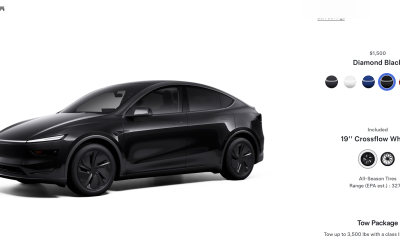
 News2 weeks ago
News2 weeks agoTesla rolls out new, more affordable trim of the Model Y Juniper in U.S.
-
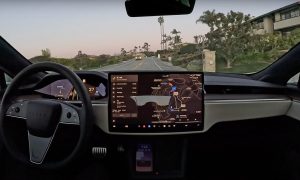
 News2 weeks ago
News2 weeks agoTesla expands Early Access Program (EAP) for early Full Self-Driving testing
-

 News2 weeks ago
News2 weeks agoTesla celebrates key milestone for 4680 battery cell production cost
-
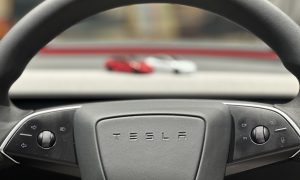
 Investor's Corner2 weeks ago
Investor's Corner2 weeks ago“Nothing Magnificent about Tesla (TSLA),” claims Jim Cramer
-

 News1 week ago
News1 week agoI took a Tesla new Model Y Demo Drive – Here’s what I learned
-
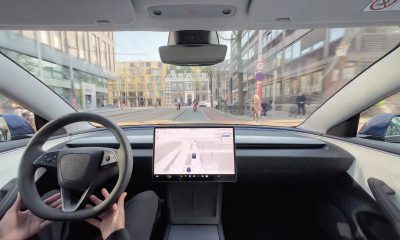
 News2 weeks ago
News2 weeks agoTesla Europe shares FSD test video weeks ahead of launch target
-

 News2 weeks ago
News2 weeks agoThis Tesla executive is leaving the company after over 12 years
-
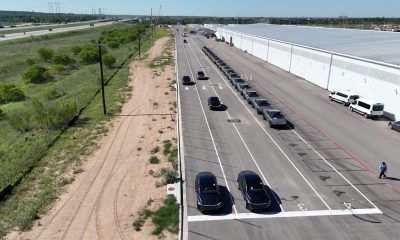
 News2 weeks ago
News2 weeks agoTesla’s Giga Texas vehicles now drive themselves to outbound lot

